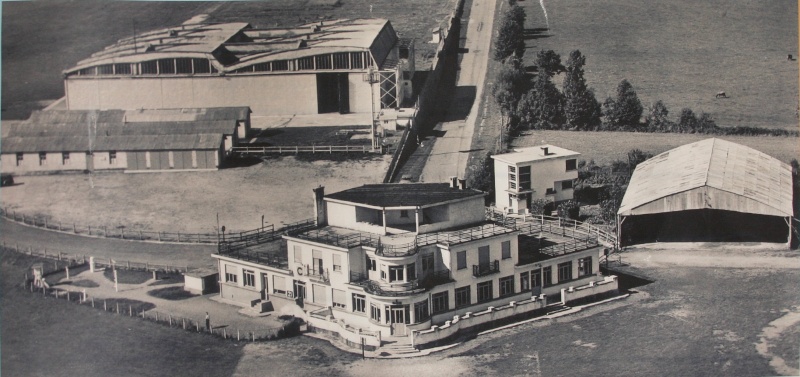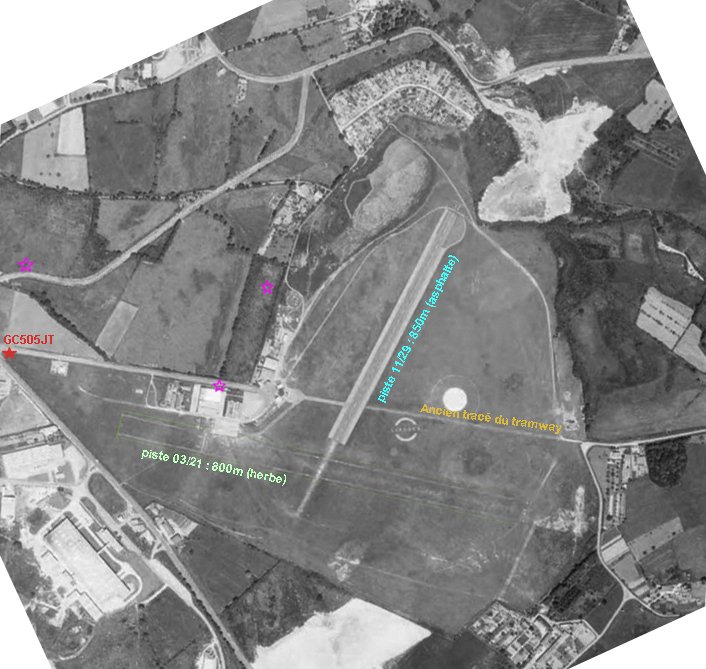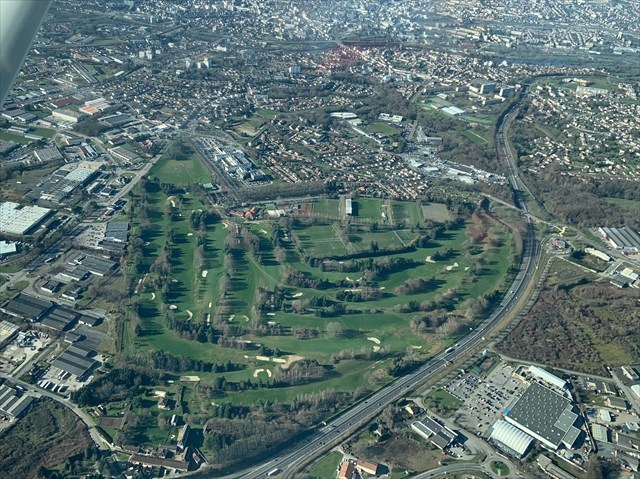De 1933 à 1974, l'aérodrome de Limoges-Feytiat, situé à l'emplacement actuel du Golf St Lazare de Limoges, a connu le développement de l'aviation Française et Limousine.
Dès la fin des années 20, le développement de l'aviation a conduit Limoges à se chercher un terrain d'aviation. En 1928, Diedonné COSTES qui allait effectuer la première traversée sans escale de l'Atlantique Sud deux ans plus tard, s'est posé sur le champs d'aviation du Mas de l'Age qui correspond, maintenant, à l'ancien terrain militaire de Couzeix. Il est aussi à la base de la création de l'Aéroclub du Limousin.
Le terrain de Couzeix étant trop limité (piste de 200m), le terrain de cavalerie de Saint-Lazare situé entre les communes de Limoges et Feytiat, est alors reconverti en terrain d'aviation par la ville de Limoges. Dès 1933, l'aérodrome était réservé à quelques pionniers privilégiés mais l'ouverture officiel à la circulation aérienne publique a eu lieu en août 1935 avec la ligne Paris-Bourges-Limoges-Toulouse. En 1937, un grand hangar avec un toit paraboloïde hyperbolique, conçu par Fernand Aimond, est construit tandis que l'aérogare accueille ses premiers passagers en 1939.

L'aérogare et le hangar (source CAL )
L'aérodrome a accueilli un grand nombre de célébrité comme les Limougeauds Fernand MALINVAUD (as de l'acrobatie aérienne des années 30) et Maryse BASTIE (première femme à traverser l'atlantique sud en 1936 et détentrice de nombreux records) mais aussi Pierre CLOSTERMANN, as de la seconde guerre mondiale.
Sur la piste de 535 m, toutes les disciplines sportives étaient représentées : le vol moteur et le tourisme aérien, le vol à voile, l'aéromodélisme et le parachutisme... Le dimanche, le public montait «au terrain» à pied, à vélo, en tramway puis en trolley-bus, pour voir évoluer les aviateurs.
Bien que située non loin de la base aérienne de Romanet (GC505JT-aerodrome-de-limoges-feytiat), sa piste était exclusivement civile.

Vue aérienne de l'aérodrome en 1967 avec sa nouvelle piste en asphalte
En 1967, le développement de l'Aviation Limousine voit ses efforts récompensés avec la création de la première compagnie aérienne régionale, AIR LIMOUSIN avec des lignes Limoges-Lyon et Limoges-Poitiers qui peut utiliser la nouvelle piste en asphalte. Avec l'essor de ces lignes, la nécessité de créer un nouvel aéroport adapté aux exigences de l'aviation commerciale à conduit à l'ouverture de l'aéroport de Limoges-Bellegarde en 1972 ce qui a entrainé la fermeture de l'aérodrome et sa reconversion en 1989 en un parc des sports et un golf minicipal (GC51KBT-VERT golf #1).
Le Docteur BARRET de NAZARIS, après avoir décollé de l'aérodrome de Limoges-Feytiat a trouve la mort au Sud de l’Espagne, victime de sa passion du ciel, en tentant de battre le record du monde de distance en ligne droite pour avion de moins de 500 kg.
------------------------------------------------------------------------------------------------------------------------

Le golf en 2020(source : ACLimousin)
------------------------------------------------------------------------------------------------------------------------
From 1933 to 1974, the airfield of Limoges Feytiat, located,here, at the site of the municipal golf of St Lazare of Limoges, saw the development of Limousin and French aviation.
By the late 20s, the development of aviation led Limoges to seek an airfield. In 1928, Diedonné Costes that would make the first nonstop crossing of the South Atlantic two years later, landed on the airfield of "Mas de l'Age" which corresponds now to the former military land at Couzeix. It is also the basis for the creation of the Aero Club of Limousin.
The field of Couzeix being too limited (200m-long track), the Cavalry ground of Saint-Lazare located between the towns of Limoges and Feytiat is converted into an airfield by the town of Limoges. Since 1933, the airfield was reserved for a privileged few pioneers but the official opening to the public air traffic took place in August 1935 with the Paris-Bourges-Limoges-Toulouse line. In 1937, a large shed with a hyperbolic paraboloid roof, designed by Fernand Aimond, is built while the terminal welcomed its first passengers in 1939.
The airfield has hosted many celebrity like Limoges-born Fernand Malinvaud (ace of aerobatics in the 30's) and Maryse Bastié (first woman to cross the South Atlantic in 1936 and holds numerous records) as well as Pierre Clostermann, ace of World War II.
On the track of 535 m, all sports were represented: the motor flight and air travel, gliding, model airplanes and skydiving ... On Sunday, the audience rose to the ground on foot, bicycle, tram and trolley-bus in to see evolve aviators.
Although located near the Romanet airbase (GC505JT - Aerodrome de Limoges-feytiat), its track was exclusively civil.
In 1967, the development of Limousin aviation is rewarded with the creation of the first regional airline, "AIR Limousin", and Limoges-Lyon and Limoges-Poitiers regular lines. With the development of these lines, the need to create a new airport adapted to the requirements of commercial aviation has led to the opening of the Limoges Bellegarde Airport (GC4PQNE - Alphabet 87, lettre E : ENVOL) in 1972 which resulted in the closure of the airfield and his conversion in 1989 into a sports park and a golf Minicipal (GC51KBT - VERT golf # 1).
Dr BARRET de NAZARIS, after taking off from the airfield of Limoges-Feytiat has found death in southern Spain, victim of his passion for the sky, trying to beat the world record for distance in a straight line to plane of less than 500 kg.
Source :
http://www.ville-feytiat.fr/actualite/exposition_aerodrome.php
A. Fradet, Survol d'aérodrome Limoges-Feytiat 1933-1974 (2008) disponible à la BFM
C. Lacan, Histoire de l'aviation en Limousin (1998) disponible à la BFM